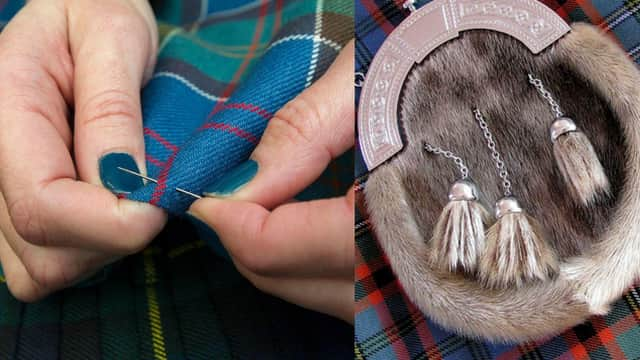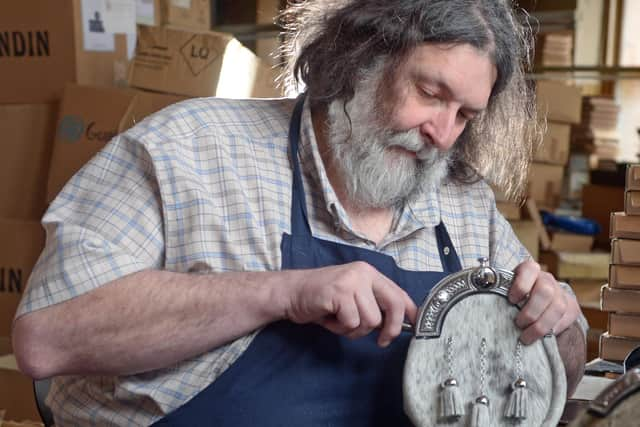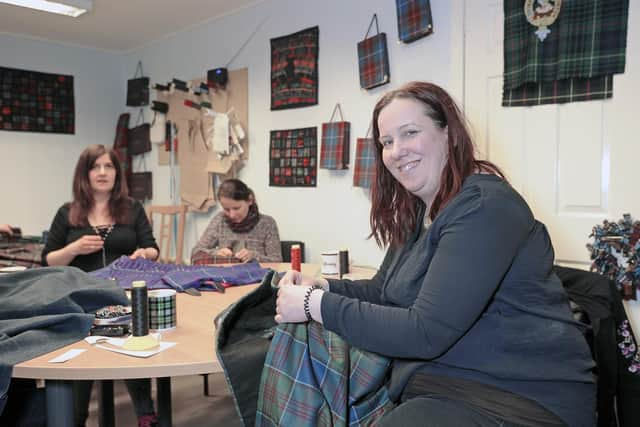Coronavirus Scotland: Kilt-making and sporran-making added to lists of 'endangered' crafts in the UK by the Heritage Crafts Association as covid impacts traditional skills


The Heritage Crafts Association (HCA) has announced that only six people now make a living crafting the traditional leather and horse hair pouch worn with kilts, with a further 20 involved as amateurs.
HCA said the Covid crisis has exacerbated the problems faced by craftswomen and men, with many traditional skills on the verge of extinction in the UK.
Advertisement
Hide AdAdvertisement
Hide AdThe craft joins Shetland lace knitting and compass-making on a UK-wide 'critically endangered' HCA list 2021 which represents those at serious risk of no longer being practised in the UK


Only one person is involved in Shetland lace knitting on a part-time basis.
A new addition to the endangered - rather than critically endangered - list is hand-stitched kilt-making. Hat-making and spectacle-making also newly featured on the endangered list this year.
According to HCA, the sporran industry has a lack of training opportunities and many makers have difficulty accessing materials on a small scale in Scotland.
A huge demand for ‘substandard and very cheap imports’ is also a cause for concern for UK-based sporran makers.


Greg Whyte, who runs sporran maker Margaret Morrison Ltd, has seen his staff reduce from 15 to five in recent months.
He said: “Like everyone else we have taken a bit of a knock, but in a bigger way even before the pandemic because of competition from overseas.
“It is a bit of a dying art... it's a battle but we fight on.”
Advertisement
Hide AdAdvertisement
Hide AdThe list of 244 traditional crafts classifies four as extinct, 56 as critically endangered and 74 as endangered. The remaining 110 are classed as viable.
Crafts that have become 'extinct' include the making of traditional cricket balls and lacrosse sticks.
Making glass eyes and mouth-blown sheet glass also join sporrans and Shetland lace knitting in the critically endangered category, meaning they have few practitioners and a lack of routes for passing on skills.
Mary Lewis, who led the research on behalf of the HCA said:“Covid-19 has been tough on everyone, not least the craftspeople who possess our most fundamental craft skills.
"Society is rapidly changing around us, and it is more important than ever that we are aware of the cultural assets still available to us, so that we can have an informed debate about what we want to safeguard as a resource for the future.
"If we allow endangered crafts to disappear then we seriously diminish the opportunities for future generations to create their own sustainable and fulfilling livelihoods, based on these skills.”
Despite certain skills becoming endangered, no new crafts have become extinct in the past two years, and some, such as gilding and pole-lathe bowl turning, have seen an upturn in their fortunes.
Daniel Carpenter, HCA operations director, said: "People are re-evaluating their lives during the pandemic, and wondering about moving out of the cities and adopting an alternative way of life.
Advertisement
Hide AdAdvertisement
Hide Ad"That, in turn, has led to people looking at crafts in a different light.
"Craft programmes on TV, such as The Great Pottery Throwdown and The Great British Sewing Bee, have also definitely renewed interest in some of these crafts."
A message from the Editor:
Thank you for reading this article. We're more reliant on your support than ever as the shift in consumer habits brought about by Coronavirus impacts our advertisers.
If you haven't already, please consider supporting our trusted, fact-checked journalism by taking out a digital subscription.
Comments
Want to join the conversation? Please or to comment on this article.
